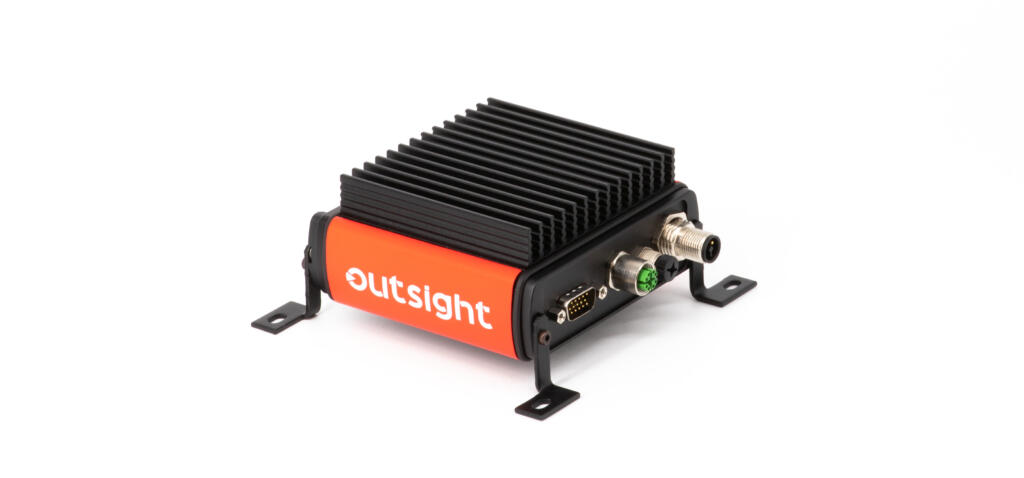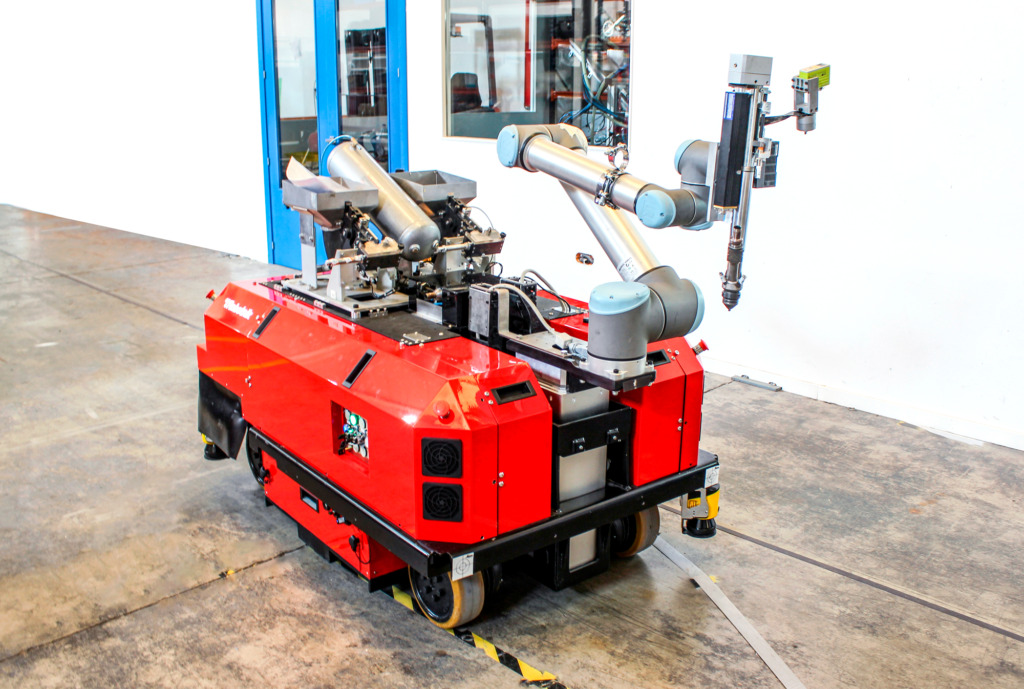100 uses of mobile robots – part one
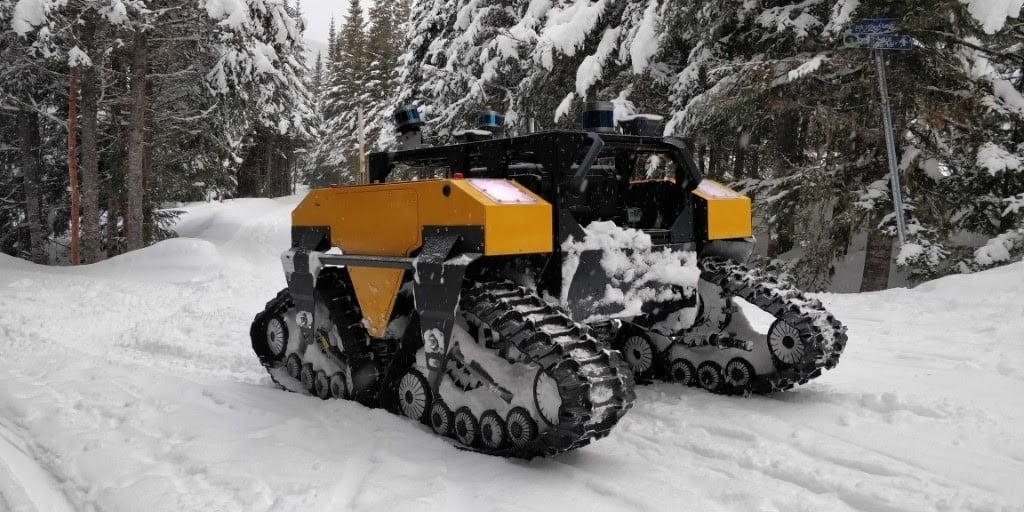
What are mobile robots used for? A question that, given the title of this piece, has many possible answers, at least 100 uses of robots in fact. The applications of robotics are vast and expanding, with huge implications for the future of mankind, the planet—and beyond. Over the last 50 years, we’ve become familiar with the idea of a range of robot applications, with widespread use in factories and laboratories, but today, thanks to sensors, actuators, and AI, advanced robots are popping up everywhere.
What are mobile robots used for? Well… how long have you got?
1. Agriculture
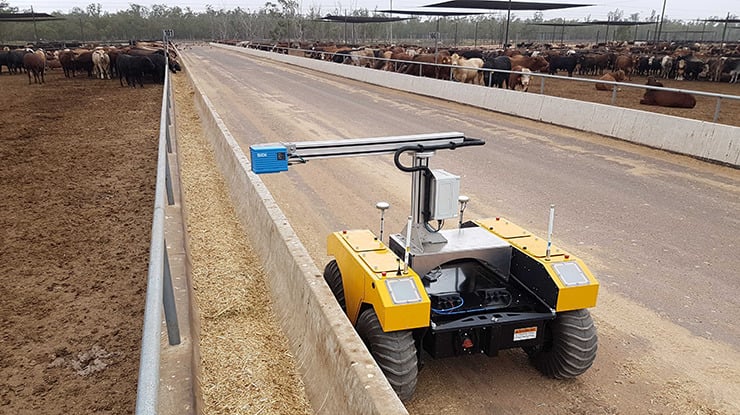
According to several researchers, the agricultural robotics market is about to blow up—big time. Picture teams of robots traversing the fields, taking dull and repetitive tasks out of farmers’ hands so their time can be better spent elsewhere. Smart farming will transform the way we produce food, increasing production, efficiency, and quality.
How? (2) Weeding and pest control, for one. Autonomous vegetable weeding UGVs make large-scale weeding quicker and easier, lowering production costs and reducing the need for toxic weedkillers. Robots can also target pesticides to the plants that need them, in contrast to the traditional ‘spray and pray’ approach that wastes upwards of 95% of all pesticides and harms vital pollinators, such as bees.
Agricultural robots can also tackle (3) harvesting and picking with speed and accuracy, increasing yields and reducing waste. With the demand for food outpacing farmland and a shortage of seasonal workers, harvesting and picking robots help to close this gap. These autonomous machines use visual recognition to assess the size, shape and colour of fruits and vegetables and sort them by relative maturity, guided by cameras and 3D sensors.
Not only that, they can also be used for (4) seeding and pruning. Swarms of small four-wheeled robots can help farmers optimise their planting operations using autonomous precision seeding that ensures each has the best chance of growing, while thinning and pruning robots use computer vision to cut back and remove plants to improve their growth.
(5) Crop phenotyping, the act of identifying the strongest and healthiest plants in order to selectively breed crops with desirable traits, is another tedious and time-consuming agricultural task that can be managed and accelerated by robots. Semi-autonomous devices equipped with sensors, HD thermal cameras and GPS can measure everything from plant height and leaf area to the temperature and moisture content of the soil.
But it’s not just arable farming; we’re also beginning to see robots used in livestock farming to (6) herd and milk cattle. A growing number of farmers, particularly in New Zealand and Ireland, use remote-controlled drones to round up their animals over rugged terrain. Collaborative robots can also be used to assist in the milking process by spraying disinfectant on cows’ udders.
Clearpath Robotics’ Warthog UGV was recently combined with a bunk scanner to solve the problem of (7) bunk management: scanning livestock feed bunks to give an accurate measurement of how much the animals have consumed. The solution, named BunkBot, uses GNSS for navigating routes and LiDAR to avoid collisions, with Warthog providing the ideal mobile base to tackle muddy and uneven ground.
Finally, (8) seaweed farming. Underwater robots with custom-built arms are part of an emerging initiative to help kelp farms operate at scale. What’s more, robotic submarines offer a potential solution that will allow farmers to cultivate vast tracts of open ocean, far beyond where kelp is usually found. This has significant implications for biofuel production, with seaweed providing a green alternative to fossil fuels and other land-based biofuels.
9. Construction
Robots have the ability to dramatically improve the speed and quality of construction work, helping firms to mitigate labour shortages by automating manual tasks. While it is currently one of the least automated industries, construction robots are now starting to realise their commercial potential.
Our friends at Clearpath lent a helping hand to Barcelona-based robotics startup Scaled Robotics to develop a solution that (10) digitises construction monitoring using its Husky UGV platform, giving project managers the ability to keep track of their construction projects in real-time. These mobile robots autonomously navigate their way around the construction site and capture data with multiple onboard sensors, carried by the Husky UGV mobile base, minimising costly construction errors. A similar project took place at North Carolina State University.
What if robots could build an entire building from start to finish? Actually, they can—thanks to (11) 3D printing. 3D printers construct three-dimensional objects from a CAD model or a digital 3D model which, controlled by a robotic arm and a set of preprogrammed instructions, means you can effectively print a brand-new, structurally sound building with zero physical work carried out by humans.
No need to let robots have all the fun, though. (12) Bricklaying robots can automate and improve onsite masonry construction, with the first commercially available bricklaying robot from Construction Robotics capable of laying 250-300 bricks per hour. Its competitor, the Hadrian X from Fastbrick Robotics, is said to be capable of building 100 to 300 homes a year.
But that’s not all! (13) Robot welding is taking the construction and automotive industries by storm, increasing accuracy, repeatability and throughput. Comprising a mechanical manipulator and controller, commonly aided by machine vision, robot welding provides a safe, cheap and efficient way to mechanise repetitive welding processes.
In the words of Smokey Robinson, you only build me up to tear me down. (14) Robotic bulldozers and excavators, while slower than demolition crews, are far safer and cheaper. These machines use LiDAR sensors and GPS to see the world around them and are specially designed to withstand massive amounts of vibration.
15. Emergency response
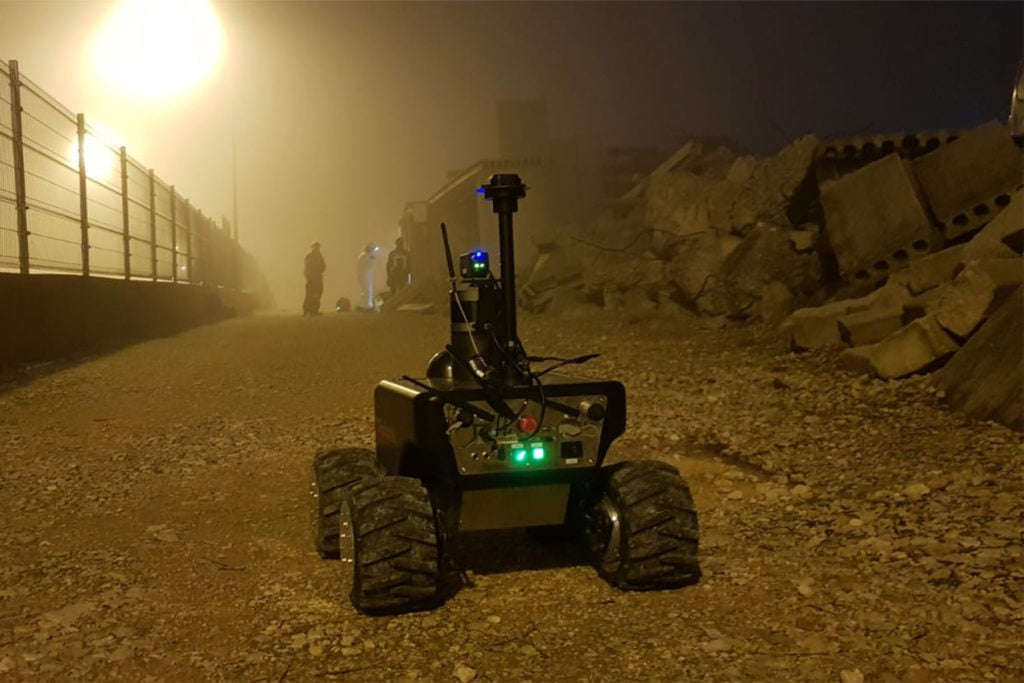
Robots and autonomous systems will play an increasingly important role in future emergency response and disaster relief, thanks to their ability to navigate extreme environments. Technologies are in development to deliver vital services such as energy, transportation, telecommunications, food and healthcare while cutting costs and response times.
Drones and robots have been used on many occasions to (16) provide disaster relief in much more efficient ways than traditional human aid. Disaster conditions are sometimes too dangerous to send in human responders, and with natural disasters on the rise, we expect to see more and more robots coming to the rescue. While UAVs cruise the sky to take pictures and collect data, other robots do the groundwork: scanning for objects, examining and manipulating the environment, and assisting in rescue missions.
Robots can be used in a (17) search and rescue situation to support human workers by searching, mapping, removing rubble, delivering supplies, providing medical treatment or evacuating casualties. Rescue robots have heat, motion and visual sensors that transmit real-time video and sensory data back to the controller and are programmed to make decisions according to the situation—unaffected by fear, fatigue or stress.
(18) Maritime rescue robotics is another burgeoning field, with water rescue robots able to go where humans often can’t, such as fast-moving rapids or onto thin ice. Hyrodnalix’s Emergency Integrated Lifesaving Lanyard (EMILY), a remote-controlled robot that acts as a hybrid flotation buoy-lifeboat, saved hundreds of refugees off the coast of Greece during the European migrant crisis. Velox, an amphibious robot developed by Pliant Energy Systems, can swim through water, skate along ice and push through snow—the ideal candidate for winter rescue missions.
(19) Aerial rescue robots have their part to play as well, often used in combination with UGVs to record and broadcast details back to remote crews. UAVs are particularly suited to mountain rescue, (20) controlling wildfires and even (21) targeted avalanche detonations, pending a change in regulations.
Mobile robots can also be used to localise and visualise points of interest for (22) first aid in situations when first responders are unable to reach the site, navigating through unknown terrain and using image processing to detect humans and even individual body parts, before sending pictures back to a remote medical expert.
23. Environment
Aquatic, terrestrial and airborne robots are helping us conserve our ecosystems in a number of ways by carrying out roles that serve a benefit to the environment or gathering data that gives us an insight into levels of pollution, species and illegal activity, to name a few. Robots are (24) helping in the fight against climate change by assisting scientific research, monitoring and reducing carbon emissions, and mitigating climate disasters.
Cutting-edge underwater robots are being developed to (25) clean up our oceans and rivers, including one such example developed locally at the University of Bristol. Row-bot is an autonomous swimming robot that ‘eats’ water pollution, turning it into energy. Meanwhile in Chicago, non-profit Urban Rivers has developed a Trashbot that keeps its waterway and floating wetland waste-free.
Unmanned surface vessels like Heron from Clearpath Robotics, offer an elegant solution to conducting (26) research in aquatic environments. With applications in navigation and mapping, environmental monitoring and harbour surveillance, Heron is equipped with a payload bay for submerged sensors and a generous mounting system for those above water.
Team Tao, a joint venture between Soil Machine Dynamics Ltd and Newcastle University, is on a mission to (27) map the ocean floor, with the aim to have no feature larger than 100m unmapped by 2030. A swarm of small, torpedo-like robots called Bathypelagic Excursion Modules (BEMs), carried and deployed by a USV, will operate together to map the seafloor for considerably less than traditional ship-borne mappers.
With overfishing, acidification and pollution threatening our oceans, scientists believe that underwater robots may be the key to (28) protecting marine ecosystems. Thomas, a marine robot created by ASV Global, is equipped with a range of sensors and cameras to capture footage of dolphins and other sea creatures, while QUT’s RangerBot identifies and (29) kills invasive species like crown-of-thorns starfish, which are a major cause of coral loss on the Great Barrier Reef.
On land, robots are (30) planting trees and (31) pollinating crops. Autonomous tree planting is the future of reforestation, planting many times faster than traditional planting techniques while improving safety, lowering costs and achieving higher plant survival rates. Pollinating drones, while not intended to replace bees, are under development to help fill the gaps in light of declining bee populations, alongside 3D printed robotic flowers that (32) encourage real bees to pollinate.
Increasingly, robotic systems are being used as integral data-gathering tools by environmental scientists, providing new perspectives and a greater understanding of the planet and its processes. With serious natural disasters becoming more frequent, there is a need for widespread continuous (33) environmental monitoring in highly unstructured settings, such as landslide-prone zones or active volcanoes. Beneath the sea ice, ROVs are used to (34) collect data on the Arctic Ocean, its weather, its ice, and its ecosystems.
There are so many ways in which robots can help us to observe, understand and facilitate energy and conservation tasks; the last one worth mentioning is the ability to (35) harvest wave and solar energy. One such example is the Wave Glider by Liquid Robotics, a small USV that operates independently at sea, fuelled by solar energy and wave-generated propulsion. Over the course of a year, Wave Glider can independently monitor marine ecosystems, (36) predict weather patterns, gather environmental data and (37) conduct reconnaissance.
38. Industry and logistics
Industrial robots used to be quite expensive, making them difficult to justify. But things are changing today. Not only are today’s robots more flexible and precise—necessary in a busy distribution environment—they are also cost-effective enough to make sense from a financial perspective.
There are a huge number of potential robotic applications in logistics: to (39) load or unload products from pallets, to (40) package goods and materials, and to (41) pick products from shelves. Collaborative Mobile Robots (CMRs), such as those developed by Robotnik, are designed to assist humans in the workplace by optimising tasks that are repetitive, tedious and/or dangerous.
Robots in distribution centres can also be used for (42) automated surveillance and (43) automated inventory management, allowing manufacturers and distributors to operate across much larger sites with leaner and more flexible practices. Meanwhile, in sorting centres, robotics may be used for (44) autonomous stock replenishment and (45) autonomous manoeuvering via self-driving trucks.
Robots do what humans cannot: work 24 hours a day, 7 days a week, 52 weeks a year—without needing breaks. Retail giants like Amazon and Walmart have already deployed robots in their warehouses and fulfilment centres, cutting around 70% of warehouse labour costs and keeping operations moving around the clock.
In (46) manufacturing, robots are used to automate repetitive tasks, free up manpower, and fill roles in areas where it can be difficult to recruit the necessary employees. Any repetitive task is a candidate for robotic manufacturing, from material handling to (47) welding and assembly. Cutting, forming, glueing, painting, and inspection all fall under the remit of robotic capabilities.
(48) Last-mile delivery is a further area of logistics with robotic applications, from UAV delivery robots to automated sorting. Amazon is in the process of developing Prime Air, a delivery system designed to deliver packages to customers in 30 minutes or less using small drones, with other logistics companies like UPS and DHL looking to follow suit.
Engineering company Rolls-Royce recently unveiled designs for an unmanned, remote-controlled cargo ship, with plans to launch their first remote vessel within 10 years. If it comes off, this could be a game-changer for the ocean freight shipping industry, allowing carriers to safely and efficiently (49) transport goods worldwide with no crew.
Exciting as it is, robotics technology is arriving slowly but surely, with gradual adoption and ongoing development needed. Clearpath’s Boxer, the indoor mobile robot, is designed for the further (50) prototyping and development of industrial applications.

